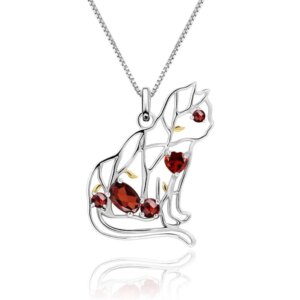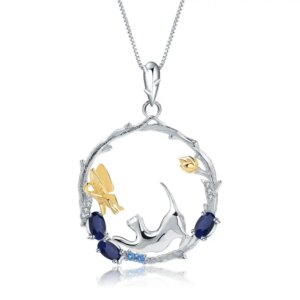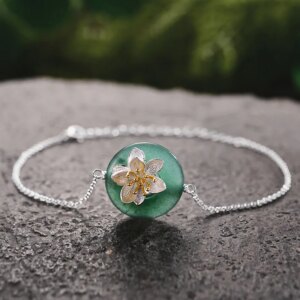Cats heat cycle is a crucial aspect of feline reproductive health. This guide will help you understand the signs, symptoms, and management of a cat in heat. Whether you’re a new cat owner or a seasoned pet parent, knowing how to recognize and handle a cat’s heat cycle is essential for their well-being. By the end of this article, you’ll have a clear understanding of what to expect and how to provide the best care for your feline friend. At Cat Karma Creations, we are passionate about all things cat-related, and we want to share our knowledge with you.
What is a Cats Heat Cycle
Cats Heat Cycle Biological Explanation
A cat’s heat cycle, also known as the estrus cycle, is a series of hormonal changes that prepare a female cat for reproduction. During this cycle, the cat’s body undergoes various physiological and behavioral changes to facilitate mating and pregnancy. The heat cycle is driven by hormones such as estrogen and progesterone, which are essential for the development and maintenance of the reproductive system. As a cat-themed jewelry and gift boutique, we understand the importance of caring for our feline friends and want to help you do the same.
Importance for Reproduction
The heat cycle is a vital part of a cat’s reproductive health. It ensures that the cat is physiologically ready for mating and pregnancy. Understanding this cycle is crucial for responsible pet ownership, as it helps you manage your cat’s behavior and health. By recognizing the signs and symptoms, you can take appropriate measures to ensure your cat’s well-being and prevent unwanted pregnancies. At Cat Karma Creations, we believe in the importance of responsible pet care and are here to support you every step of the way.
Signs and Symptoms of a Cat in Heat
Behavioral Changes
Cats in heat often exhibit noticeable behavioral changes. These can include increased affection, rubbing against objects, and a heightened level of restlessness. Your cat may also become more vocal, calling out more frequently and loudly. These behaviors are driven by the urge to attract a mate and can be quite distressing for both the cat and the owner. If you notice these changes, it’s a good idea to create a calm and comfortable environment for your cat. You can also explore our cat-themed jewelry to find the perfect gift for the cat lover in your life.
Physical Symptoms
Physical symptoms of a cat in heat can vary but are generally easy to recognize. Your cat may have a swollen and reddened vulva, and you might notice a discharge that can be clear or slightly bloody. Additionally, your cat may display more frequent urination or marking behavior, which is a way to signal her readiness to mate. If you’re concerned about your cat’s health, don’t hesitate to contact a veterinarian. You can also follow us on Instagram for more tips and updates on cat care.
Vocalization Patterns
Vocalization is a common symptom of a cat in heat. Your cat may meow more frequently and loudly, a behavior known as calling. This vocalization is her way of attracting male cats and can be quite persistent. It’s important to note that this increased vocalization can be disruptive and may require some management strategies to keep your cat and your household comfortable. For more information on managing a cat in heat, visit our website or contact us at info@catkarmacreations.com.
Managing a Cat in Heat
Creating a Comfortable Environment
Creating a comfortable environment for your cat during her heat cycle is essential. Provide a quiet, stress-free space where she can rest and feel secure. Ensure that she has access to clean litter boxes and fresh water. You can also use calming pheromone sprays or diffusers to help reduce her stress levels and make her more comfortable. At Cat Karma Creations, we offer a range of cat-themed jewelry that can help you show your love for your feline friend.
Using Calming Techniques
Calming techniques can be very effective in managing a cat in heat. Gentle petting and soothing vocal reassurance can help calm your cat and reduce her anxiety. You can also try using calming supplements or herbal remedies, such as chamomile or valerian root, to help soothe her. Always consult with your veterinarian before using any new supplements or remedies. For more tips on calming your cat, follow us on Facebook.
Consulting a Veterinarian
If your cat’s heat cycle is causing significant distress or if you have concerns about her health, it’s important to consult a veterinarian. Your vet can provide advice on managing the cycle and may recommend spaying as a long-term solution. Spaying is a safe and effective way to prevent heat cycles and reduce the risk of certain health issues, such as uterine infections and breast cancer. For more information on spaying and neutering, visit our website or contact us at (800) 343-1604.
Preventing Heat Cycles
Spaying and Neutering Benefits
Spaying your cat is one of the most effective ways to prevent heat cycles and the associated behavioral and health issues. Spaying involves the surgical removal of the ovaries and uterus, which eliminates the possibility of heat cycles and unwanted pregnancies. It also reduces the risk of uterine infections and breast cancer, providing long-term health benefits for your cat. At Cat Karma Creations, we support responsible pet ownership and the well-being of all cats. For more information on our commitment to feline welfare, visit our website.
Natural Management Methods
For those who prefer not to spay their cats, there are some natural management methods that can help. These include providing a quiet and stress-free environment, using calming supplements, and ensuring your cat has plenty of physical activity to distract her from her heat cycle. However, these methods are less effective and require ongoing management to be successful. For more tips on natural management, follow us on Pinterest.
Regular Veterinary Check-ups
Regular veterinary check-ups are essential for maintaining your cat’s overall health and well-being. During these check-ups, your vet can monitor your cat’s reproductive health and provide advice on managing heat cycles. They can also identify and address any health issues early, ensuring your cat remains healthy and happy. At Cat Karma Creations, we believe in the importance of regular vet visits and encourage all cat owners to prioritize their pet’s health. For more information, visit our website or contact us at sales@catkarmacreations.com.
Comparison of Spaying, Neutering, and Natural Management
To help you make an informed decision about managing your cat’s heat cycle, here’s a comparison of the effectiveness, health benefits, behavioral changes, cost, and recovery time of spaying, neutering, and natural management:
| Feature | Spaying | Neutering | Natural Management |
|---|---|---|---|
| Effectiveness | Highly effective in preventing heat cycles and unwanted pregnancies | Effective in reducing male cat behaviors | Less effective, requires ongoing management |
| Health Benefits | Reduces risk of uterine infections and breast cancer | Reduces risk of testicular cancer and prostate issues | No direct health benefits, may reduce stress |
| Behavioral Changes | Eliminates heat cycle behaviors and reduces marking | Reduces aggression and roaming | May reduce some behaviors but not as reliably |
| Cost | Higher initial cost but can save on long-term vet bills | Moderate cost, generally less than spaying | Low cost, but ongoing management required |
| Recovery Time | Short recovery period, typically 1-2 weeks | Short recovery period, typically 1-2 weeks | No recovery period, but requires consistent management |
Key Points to Remember
- Understanding the biological reasons behind a cat’s heat cycle and its importance for reproductive health.
- Identifying the key signs and symptoms of a cat in heat, such as increased vocalization and restlessness.
- Exploring the different stages of a cat’s heat cycle, from proestrus to diestrus, and what happens during each stage.
- Discussing the benefits of spaying or neutering your cat, including preventing heat cycles and reducing health risks.
- Providing practical tips for managing a cat in heat, such as creating a quiet space and using calming techniques.
- Highlighting the importance of early intervention and regular veterinary check-ups to ensure your cat’s well-being.
Popular Quote
“Cats are connoisseurs of comfort.” – James Herriot
Statistical Fact
According to the American Veterinary Medical Association (AVMA), approximately 3.2 million cats enter animal shelters in the United States each year. This statistic underscores the importance of responsible pet ownership and the benefits of spaying and neutering to control the cat population and reduce the number of homeless cats. (Source: AVMA, 2021)
Three Tips for Managing a Cat in Heat
- Provide a Comfortable Space: Create a quiet, stress-free environment for your cat to help her feel more at ease during her heat cycle. Ensure she has access to clean litter boxes and fresh water.
- Use Calming Techniques: Gentle petting, soothing vocal reassurance, and calming supplements can help reduce your cat’s anxiety and restlessness. Consult with your veterinarian before using any new supplements.
- Consider Spaying: Spaying is a safe and effective way to prevent heat cycles and reduce the risk of health issues such as uterine infections and breast cancer. It’s a long-term solution that can improve your cat’s overall well-being.
Popular Questions
- How often do cats go into heat? Cats typically go into heat every 2-3 weeks during the breeding season, which can last from spring to early fall. However, indoor cats may experience heat cycles year-round due to controlled lighting and temperature.
- Can I prevent my cat from going into heat without spaying? While natural management methods can help, they are less effective and require ongoing effort. Spaying is the most reliable way to prevent heat cycles and the associated behaviors.
- What are the signs that my cat is in heat? Common signs include increased vocalization, restlessness, rubbing against objects, and a swollen and reddened vulva. Your cat may also display more frequent urination or marking behavior.
- Is it safe to spay a cat in heat? While it is generally safe to spay a cat in heat, it is often recommended to wait until the heat cycle is over to reduce surgical risks and recovery time. Consult with your veterinarian for the best advice.
- How can I comfort my cat during her heat cycle? Provide a quiet, stress-free environment, use calming techniques, and ensure she has access to clean litter boxes and fresh water. You can also try using calming pheromone sprays or diffusers to help soothe her.
Final Thoughts
Understanding and managing a cat’s heat cycle is crucial for their health and well-being. By recognizing the signs, providing a comfortable environment, and considering preventive measures like spaying or neutering, you can ensure your cat remains happy and healthy. If you have any concerns or questions, don’t hesitate to contact a veterinarian for professional advice. Visit our website to find excellent gifts for cat lovers and follow us on social media for more tips and updates.
At Cat Karma Creations, we are dedicated to supporting cat owners and promoting the well-being of all feline friends. If you need any assistance or have questions about our products, feel free to reach out to us at info@catkarmacreations.com or call us at (800) 343-1604. We are here to help you and your cat every step of the way.
















